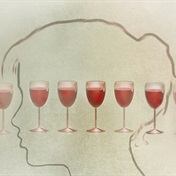Having a drink with your folks at lunch is fine, but drinking until you fall down at a party, should make the alarm bells ring.
South Africans consume vast quantities of alcohol. The figures tell the story: there are about 230 000 liquor outlets in South Africa; and we consume over 5 billion litres of alcoholic beverages per year, according a report by the Medical Research Council (MRC). This equates to 120 litres per person per year, very high considering the number of people who do not drink at all.
Why do we do it?
The drinking of alcohol is thought to go back almost as far as the human race does. It has been part of many religious and social rituals through the ages in many different societies.
Alcohol is produced by the fermentation of fruits, vegetables or grains. Water and ethanol make up the body of most alcoholic drinks. All alcoholic beverages display their percentage of alcoholic content on the labels.
What happens when you drink?
Within five minutes of consuming alcohol, it enters the bloodstream via the stomach. The only other substance absorbed in this way is aspirin.The effects can last for several hours.
Alcohol is a nervous system depressant and after three units, makes people less socially inhibited and generally more relaxed. But if more is consumed, it can make the drinker depressed, leading to so-called 'dronkverdriet'.
A unit contains eight grams of alcohol so it's the equivalent of one large beer, one glass of wine or one pub measure of spirits.
After eight units, most people will slur their speech and become clumsy, uncoordinated and sometimes very emotional. If more alcohol is consumed, double vision, nausea, loss of balance and vomiting can occur. Further drinking may lead to unconsciousness and memory loss.
Many things influence the effects alcohol has on particular people: their body weight, the speed with which the alcohol was consumed, how full or empty the stomach of the drinker was, their emotional state, their drinking habits and their personality or surroundings.
If alcohol is often used in conjunction with other drugs, this can greatly increase the effects of both substances. Alcohol taken in conjunction with certain drugs, can be fatal.
The symptoms of alcoholism
Alcohol is metabolised very quickly. It needs no digestion and is quickly absorbed. It affects every organ of the body, but its most dramatic impact is on the liver. Alcohol metabolism permanently changes liver cell structure, which impairs the liver’s ability to metabolise fats. This is why alcoholics develop fatty livers.
The liver can metabolise about one unit of alcohol per hour. If more arrives, it continues to circulate in the body until the liver can accommodate it. This is how it affects all other parts of the body.
The impact excessive alcoholic intake has on the body, is huge. The following are only some of the physical effects alcoholics can experience: gouty arthritis, cirrhosis of the liver, increased cancer risk, heart disease, kidney failure, malnutrition, dementia, obesity and depression.
There are also many psychological symptoms associated with excessive drinking of alcohol, many of which become apparent in someone’s workplace or personal life. These include a deterioration of personal hygiene, constant bouts of colds or flu, poor eating and sleeping habits, inappropriate behaviour in social situations, mood swings, poor concentration, irritibility, irregular work performance, constant lies to cover up the drinking, financial problems and frequent job changes.
Withdrawal symptoms from alcohol
Withdrawal from alcohol is dramatic and highly unpleasant. These include from mild hangovers to total withdrawal, including convulsions, and hallucinations.
Hangovers, after a single bout of excessive drinking, can consist of headaches, sleep disturbances, anxiety, nausea, tremors and vomiting.
More severe withdrawal include all of the above with the further possibility of convulsions, loss of consciousness, hallucinations and delirium tremens. These delusions are often terrifying and may produce violent behaviour.
There is a 10 to 20 percent mortality rate associated with the final stages of withdrawal from severe addiction to alcohol. This withdrawal usually requires medical supervision.
With the above facts in mind, it is important to make informed decisions about drinking. It must also be remembered that if someone in your family has a drinking problem, your chances of becoming an alcoholic increase, because the tendency appears to be partly inherited.
If you are drunk, you are also much more likely to die in a car accident, be run over by a car, to drown or to injure yourself in some way. Alcohol should be consumed with great care and never in great quantities. There is nothing romantic about dying from cirrhosis of the liver, or getting a great big puffy red nose from drinking too much or having regular hangovers.Organisations that could help, include Alcoholics Anonymous and Al-Anon (for families where drinking is a problem) and Al-Ateen (for helping teenagers cope in families where drinking is a problem). Look in your local telephone directory for the numbers in your area.
(Susan Erasmus, Health24, updated April 2008)




 Publications
Publications
 Partners
Partners










